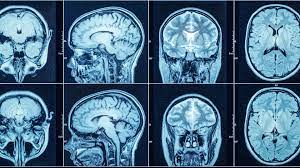MISSING THE POINT
As I studied the object placed in my hand by my new patient, Alice Thorner, realization dawned on me. Alice’s husband, Bobby, had been trying to tell me about her problems, but his words were ineffective. I had failed to grasp their significance. Her symptoms were non-specific and overwhelming. And her appearance – withdrawn, uncooperative, and chronically ill – made me suspect that depression was her primary issue.
Depression is a devastating, potentially fatal, illness that needs treatment, and it can masquerade as another disease, like infection, an endocrine problem, or cancer. Yet as I explored the possibility of depression as a possible diagnosis for Alice, Mr. Thorner dismissed the possibility. He was convinced something different was going on with his wife. That is not uncommon – depressed patients (and their families) often lack insight into their disorder. The disease itself is a darkness that obscures everything. But if treating depression was off the table, I was uncertain how to help the Thorners. I could feel their desperation. We were at an impasse.
CRACKING THE CODE
Suddenly, Alice, fumbling in her purse, looked up briefly and slipped something into my hand. It was as though a door cracked open fleetingly and she was able to send a message through. The message was unmistakable, even though delivered through a medium other than words. In fact, it spoke louder.
The small object in my hand communicated to me that it was I who lacked insight. Clearly Alice had a different illness in addition to depression, and in an instant I knew I must do everything in my power to figure out her problem and help her.
What did she stick into my hand? What new knowledge cut like a spotlight through the fog of my inadequacy? What new insight did she impart that I had been unable to glean with a stethoscope and blood tests? The object was not a CD with medical information, much less a gift to try and entice me into taking her more seriously.
It was simply a photograph.
The picture had obviously been taken recently. There was Bobby Thorner, looking much the same in the shot as in person. He proudly posed before a late model car with his arm around a lady. At first glance, she bore little resemblance to the wretched woman in front of me, rocking in misery with her face in her hands.
And yet…there in the photo were the same blue eyes! Her nose, the style and color of her hair, even the necklace, were the same, as well. I gasped. It was Alice.
But the Alice in the picture was a happy, chubby, dignified lady, whose eyes brimmed with life, instead of dimming with anguish. The contrast between that stately matriarch and the pitiful, thin, old woman in front of me spoke volumes.
“That is what I looked like six months ago,” she rasped without looking up.
Finally, I recognized that there was an undiagnosed disorder that I must address. But understanding was only half the battle. While compelling, her message still needed further clarification. Now I had to figure out what was wrong and correct the problem. But how?
SHARPENING THE FOCUS
As it turns out, what we needed was another picture. Two hours later we were looking at an MRI of her brain. The images clearly showed the culprit of her woes: a small, benign tumor (called a meningioma), directly impinging on the brainstem, causing nausea and disrupting her swallowing center. Now things were truly coming into focus. Her other symptoms, it turns out, were mostly due to her rapid weight loss of seventy pounds.
However, I was not to get the full picture of Alice Thorner as a case and as a person until after a week of therapy aimed at shrinking the tumor. Walking into her hospital room that day, I found her not humped over in pain, but sitting upright, looking me squarely in the eye, and conversing affably, as I would have expected the sweet lady in that photo to do. At that point I realized with gratification that she was going to recover, and indeed she did.
EXPANDING THE SCOPE
Can you relate to Alice Thorner’s desperation – or maybe to my inability to grasp her plight? She needed to get a message across to someone who could help her, but the information fell on uncomprehending ears. Sometimes words fail to get a point across, but actions or images speak louder.
In the upcoming posts I want to explore this reality – but on a bigger scale: in our interactions with God.
Do you suspect that God is too busy with His agenda of running the universe to pay attention to you? Does he really hear your entreaties or care about what is going on with you? How is he communicating, if at all?
What if God is actually close by and is reaching out to us, but we are missing it? Maybe he has other means of contact, which we could sense if we were properly oriented. We need a doorway of sudden insight, like that moment of connection when a photo of Alice Thorner opened my eyes and revealed an opportunity for her healing.
What images or actions is God using to reach out to us? Let’s start decoding the messages written into the material universe, especially within our own bodies.
Dr. Bill Maynard
